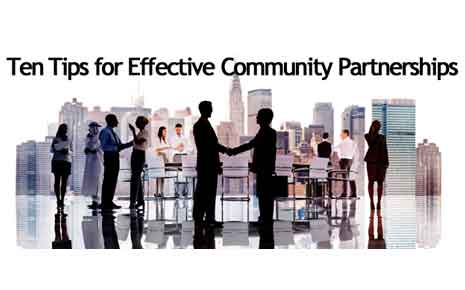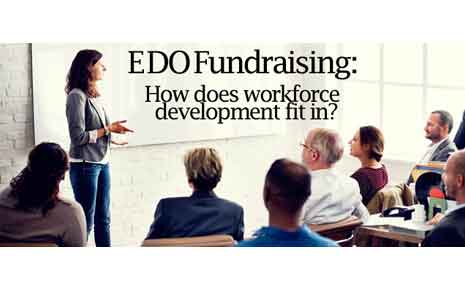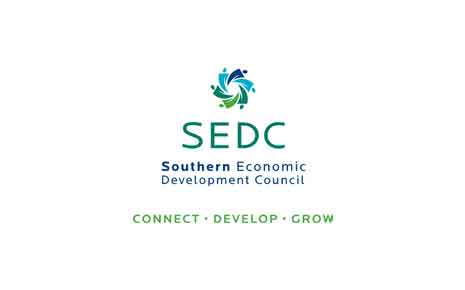This article was originally written for and published in the International Economic Development Council's 'ED Now newsletter. We are excited to make it available to non-IEDC members here for the first time.
Economic development organizations are increasingly joining forces with like-minded organizations to tackle complex economic issues. Nurturing collaboration with community partners helps stimulate job creation, boost economic development, and build community capacity and leadership.
But first, it's important to determine what conditions will support or inhibit a collaborative effort. Some important questions to ask include:
- What can each prospective partner bring to the table?
- Which stakeholders have an interest in forming a partnership?
- Who might be willing to join your collaboration?
- Will the community support the partnership?
- Are other potential partners willing to share their resources and capacities?
- How do the interests of each potential partner fit into the broader collaboration?
- Should you form a loose or formal partnership?
- How inclusive (or exclusive) does your organization need to be?
One community's experience
Jacksonville Onslow Economic Development (JOED) in North Carolina has a highly dynamic and inclusive board of directors. (Onslow County, population 195,000, is on the southeastern coast of North Carolina and has a strong military presence.) JOED's board includes ex-officio members of all major institutions in the region who can support economic development efforts, including:
- Onslow County Commissioner Chair and County Manager
- Jacksonville City Manager
- Onslow representative from NC East Alliance (regional ED organization)
- Commanding officers from Camp Lejeune Marine Corps Base and New River Marine Corps Air Station
- Mayors from all towns and cities in the county
- Chairman of the Onslow Water and Sewer Authority
- Jacksonville Onslow Chamber of Commerce President and Board Chair
- Director, NC Department of Commerce - Division of Workforce Solutions
- Coastal Carolina Community College President
- JOED Executive Director
- Onslow Memorial Hospital CEO
- Onslow County Board of Education Chair
JOED leaders decided some time ago to be inclusive and reached out to organizations that it interacts with and that impact its efforts. By nurturing and developing these community partnerships over the years, the organization's and community's outcomes have been greatly enhanced.
The most impactful component of the organization is not the makeup of the board itself but the active participation of the individuals serving. Many boards have difficulty reaching quorum and having members attend on a regular basis, but this is seldom the case with JOED. Each community partnership representative shares a common mission: to stimulate, encourage and promote economic development in Onslow County and its municipalities.
When a hurdle is uncovered with a current or prospective employer that JOED is working with, the issues are dealt with swiftly and decisively by this group. Issues around health care, taxes, workforce training, education, permits, utility issues and much more can be addressed immediately with the individuals sitting in the room. It is powerful stuff and sends a message that JOED takes its stakeholder's needs seriously.
'We empower each ex officio member of our board with voting privileges. I feel that it is important that each of our community partners has a stake in our decision-making,' said Sheila Pierce, JOED's executive director. 'In my experience, partners appreciate being included and become more engaged and responsive in the process.'
One of the challenges with this approach, however, is that it can be difficult to take a deep dive into specific issues due to the size of the board and confidentiality concerns, Pierce noted. As well, board members may be hesitant to include so many ex officio members, especially if they outnumber other members of the board.
But if your ex-officio members are selected correctly, there should be little discourse regarding their role and the direction of the organization in the big picture.
Tips for success
While JOED is a great example of using community partnerships effectively, each economic development organization is different and will have different needs and issues to address. Make a list of potential partners you think would benefit your organization and keep these tenets in mind as you proceed.
- Ensure a broad-based, inclusive partnership. Seek partners from a cross-section of your community and ensure that there is mutual benefit to partnering.
- Don't wait for all partners to get on board prior to moving your plans forward. Most partnerships expand over time; donât lose momentum waiting on others.
- Secure commitments from partners to collaborate and don't leave it to chance. Ask partners to designate specific individuals and assign responsibilities in writing.
- Seek input from your partners by collaborating to create a shared vision and/or mission. Give members an opportunity to develop the vision, rather than rubber-stamp it.
- Include partners in decision-making as needed. This builds a feeling of ownership and empowerment among stakeholders.
- Use committees to focus on areas of specialty (finance, product or member development). Conduct cross-learning exercises to enhance members understanding of needs.
- Develop shared, measurable goals and communicate your progress regularly. Make information immediately available to all of your community partners.
- https://www.convergentnonprofit.com/wp-content/uploads/2016/03/10-Tips-for-Effective-Community-Partnerships-by-A.Coe-Convergent.pdfListen and be responsive to key stakeholders in your community. However, don't try to be all things to all people.
- Make yourself available to participate in partner committees and boards. That indicates your willingness to volunteer your time for mutual benefit.
- Don't hesitate to think big and make bold decisions in order to move the ball forward. Positive momentum is always a good predictor of success. As Newton's First Law of Motion (the law of inertia) states, an object at rest tends to stay at rest, while an object in motion tends to stay in motion.
Last but not least, don't be afraid to take advantage of the funding benefits that can be derived from these collaborative partnerships. By having a wide variety of community players at the table, you increase the number of potential funder connections for your efforts. While you alone may not have the credibility or connections needed to request funding from a particular public or private entity, other members of your partnership might.
When you are able to tap in to all that your partners bring to the table, you are more likely to develop effective plans that the entire community can support, and more likely to be able to fund those plans as well. This is the basis for successfully raising money to sustain your organization over the long haul. For more information about optimizing the partnerships and funding for your non-profit organization, the experts at Convergent are here for you. Learn more about our non-profit consulting services today to promote growth within your organization.







